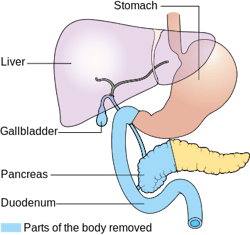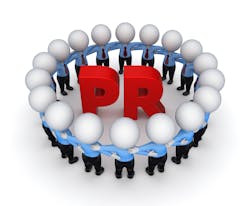What’s wrong with this picture: Dental hygienist saves 11-year-old
A trip to the dental hygienist saved 11-year-old Journee's life, as this routine visit revealed a grapefruit-sized tumor that could have killed the young girl. Dental hygienists can save lives!
At an oral prophylaxis appointment, the dental hygienist reported to Journee's mother that the whites of her eyes looked yellow, and suggested referral to their physician. Three days and several medical tests later, a mass was discovered. Journee underwent a 10-hour Whipple procedure to remove the tumor, which was benign (figure 1).
However, her doctors stated that the tumor would have eventually ruptured, possibly causing serious infection and sepsis. Sepsis is a life-threatening complication of infection that occurs when the body’s immune response triggers inflammation throughout the body. The cascading effects can damage and cause failure in multiple organ systems. The surgeons removed part of Journee's liver, pancreas, small intestine and stomach, and gallbladder.
While reading this article, there was very little mention of the dental hygienist, and a reference to a routine “dental cleaning” (cringe!). In the comment section a remark by “guest173” raised my ire:
“what a great story. The last time I saw my hygienist a few months ago, she sent me on a wild goose chase telling me to get second opinions and turned out to be nothing. At least this one was a real thing, they don't always know what they're talking about. (sic)”
I felt the need to comment back, not as a newsletter editor or employee of PennWell, but as myself! This is my response:
“I agree—kudos the dental hygienist who saved this beautiful young girl. The title should have read: Dental Hygiene Visit Tips Family Off to Daughter's Grapefruit-Sized Tumor. A dental hygienist is not a "doctor," but many have advanced degrees and all are highly educated. Some do have doctoral degrees. To "guest173" who reported that her hygienist " sent me on a wild goose chase telling me to get second opinions and turned out to be nothing." I am a dental hygienist and Past President of the American Dental Hygienists' Association, and the International Federation of Dental Hygienists. I, too, have referred patients to specialists if I suspected something amiss. My patients were grateful that I took an interest in their overall health, and happy if the results of tests were negative. Isn't that better than missing a potentially dangerous situation? Remember, in most states a dental hygienist's employers are dentists, and must approve all referrals to specialists. It is dependent on laws regarding owning one's own business, and supervision laws. And I must comment on the "routine dental cleaning." Are we housemaids? It is called a preventive prophylaxis if a patient is disease-free, and the goal is to keep them that way! If one had periodontal disease, they should have the appropriate treatment, and are then considered periodontal maintenance patients. Let’s give credit where credit is due!”
Other comments included: “See your dentist, twice a year!”; “This is news I like to hear. Hats off to the dentist.”; “What a scare for this precious girl and her family. Thank goodness for the dental assistant who gave the advice that saved this little girl's life!” (Emphasis mine.) While I respect dentists and dental assistants, it was the dental hygienist that detected this problem.
READ MORE | Are you taking blood pressure in your practice?
What is wrong with this picture? Many patients and the lay public do not know the difference between dentists, dental hygienists, and dental assistants. Now we even have dental therapists and Advanced Dental Therapists (ADTs). (2) We have different advanced practice dental hygienists in many states, and oral health therapists in some countries. The American Dental Association has been advocating for the Oral Preventive Assistant (OPA) since 2006. (3) This person would be a dental assistant that is required to receive only three months of training. After completing this training, the OPA would be permitted to perform scaling on patients with plaque-induced gingivitis. The OPA curriculum is available to state dental associations and accredited dental assisting education programs wishing to implement the program.
Do you think we need some public relations efforts to educate consumers about oral health care professionals? I encourage you to visit the American Dental Hygienists’ Association website for a multitude of resourcesto assist you.
References
1. Dentist visit tips family off to daughter’s grapefruit-sized tumor. ABC News. http://abcnews.go.com/Health/dentist-visit-tips-family-off-daughters-grapefruit-sized/story?id=29006574. Accessed March 4, 2015.
2. Dental therapy – A new profession. University of Minnesota School of Dentistry web site. http://dentistry.umn.edu/programs-admissions/dental-therapy/index.htm. Accessed March 4, 2015.
3. New dental team careers. American Dental Association web site. http://www.ada.org/en/education-careers/careers-in-dentistry/dental-team-careers/proposed-dental-team-careers/oral-preventive-assistant-faq. Accessed March 4, 2015.









